
Earth Day: April 22, 2022
Each week, one of the things mentioned in the prayers at my church is an appeal to God to help us be good stewards of his creation. This always really speaks to me.
I grew up in an agricultural community and to this day continue to learn from my mother best practices for vegetable gardening and composting. In raised beds in our back yard in McLean, lettuce and spinach seeds are just starting to emerge as tender green leaves!
Whether you garden or not, this is such a beautiful time of year to get out of doors, experience the rebirth of nature and celebrate Earth Day!
Here are a couple of links for Earth Day activities in Fairfax County:
https://www.fairfaxcounty.gov/parks/green-spring/earth-day/042322
https://www.fxva.com/blog/post/earth-day/
This blog post is the expressed opinion of its writer and does not necessarily reflect the views of Tysons Interfaith or its members.
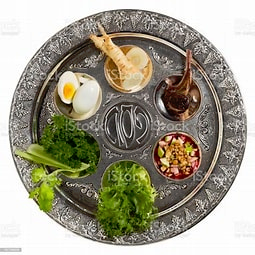
The Jewish holiday of Passover occurs every spring, as surely as the daffodils bloom, and it is perhaps the most central in terms of Jewish life and history.
The holiday begins at sunset (as do all Jewish holidays) on the 15th of the Hebrew month of Nissan. Because the Hebrew calendar is based on a lunar system, with 28 days in a month, corrected 7 times in a 19-year cycle by adding a leap month, the holidays can only move on the Gregorian calendar from late March to late April, this year beginning on Friday, April 15th.
Passover celebrates the biblical account of the Israelites’ redemption and escape from 400 years of Egyptian slavery. The story is told in the Book of Exodus, but many only know of the parting of the Red Sea. The story unfolds with the Israelites as slaves and the long attempt to be set free. Even before this freedom happens, in Exodus 12:14 the Almighty is describing a holiday and how to celebrate it: “This day shall be to you one of remembrance: you shall celebrate it as a festival to the Eternal throughout the ages; you shall celebrate it as an institution for all time. 12:15 Seven days you shall eat unleavened bread; on the very first day you shall remove leavening from your house ….”.
The unleavened bread is Matzah and is central to the celebration of the holiday.
Passover is celebrated with a special meal called the Seder, where family and friends gather to read from the Haggadah which relates the story of Passover, the Israelites leaving Egypt and going from slavery to freedom. On the Seder table is a special plate which contains food, symbolic for the holiday. There you will find a roasted lamb shank bone symbolizing a sacrifice at the Temple in Jerusalem, a roasted egg, a sacrifice brought by the pilgrims, parsley symbolizing spring, Charoset (made from apples, nuts and wine) symbolizing the clay that was used by the slaves to make bricks for Pharaoh, horseradish symbolizing the bitterness of slavery and romaine lettuce, another bitter reminder. In addition to telling the story, there is singing, a bountiful meal and the warmth and closeness only family and friends can bring.
This blog post is the expressed opinion of its writer and does not necessarily reflect the views of Tysons Interfaith or its members.
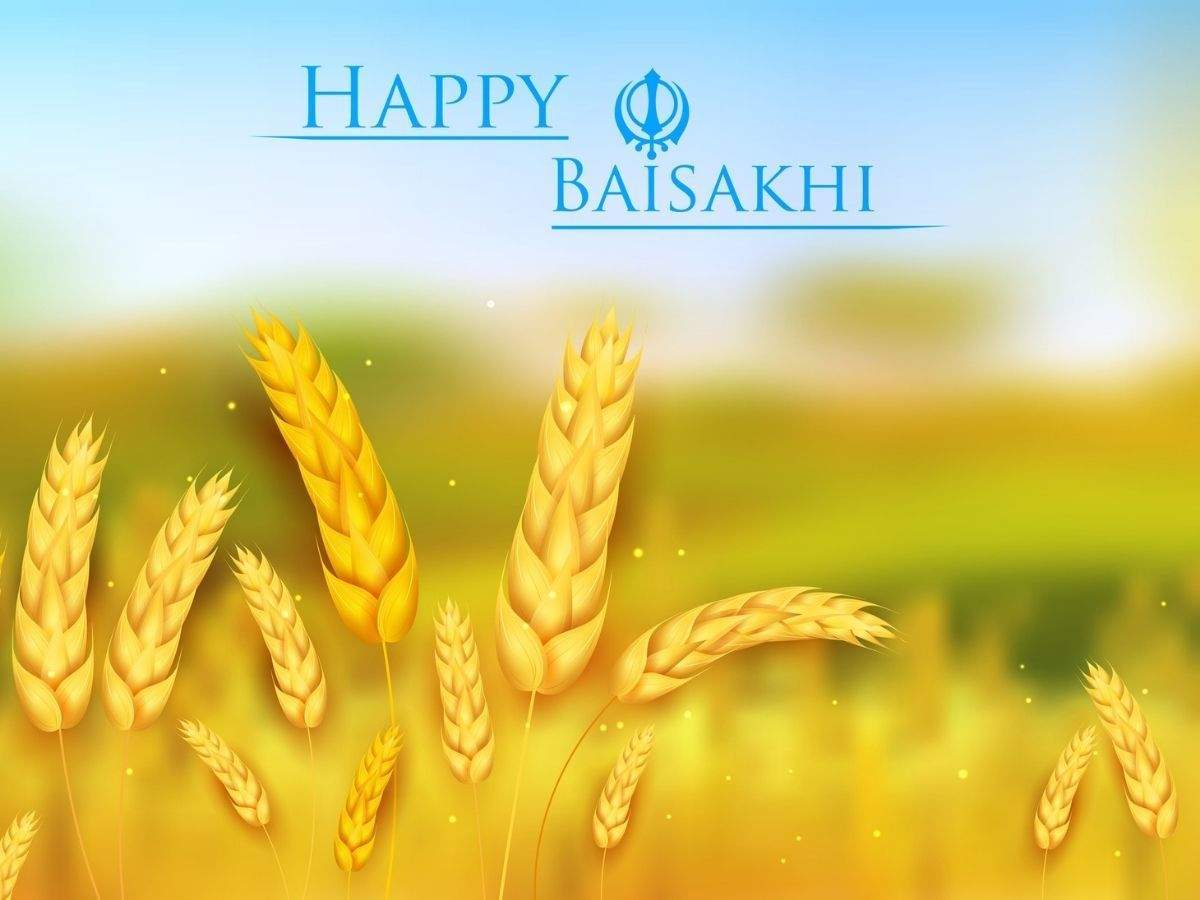
Just about every spiritual path celebrates spring in a special way. For those of us who follow the Sikh way of life, in spring, we celebrate our most auspicious holiday, called Baisakhi. This year, Baisakhi is celebrated on April 14th.
The Sikh way of life was established by ten successive Sikh Gurus in India. Each of them was a pure channel of God’s love and wisdom. They inspired people to live lives of devotion, service and joy – to live in God-consciousness. “Sikh” means “student of Truth.” Guru Gobind Singh Ji was the tenth Sikh Guru in human form.
In mid-April, 1699, at the spring festival called Baisakhi, Guru Gobind Singh Ji initiated a special baptism of the most devoted Sikhs, in which he prepared and served a divine nectar called Amrit. Through this baptism, the deeply devoted Sikhs became Khalsa, or pure ones. After the Guru baptized the first five Khalsa, he had them baptize him as well. Guru Gobind Singh Ji declared that whenever five Khalsa gather in his name, he would be there with them.
Baisakhi is the highest celebration for Sikhs. It is a time of rededication and renewal of our faith. Many people take part in this special baptism to become Khalsa at this blessed time of year.
This blog post is the expressed opinion of its writer and does not necessarily reflect the views of Tysons Interfaith or its members.
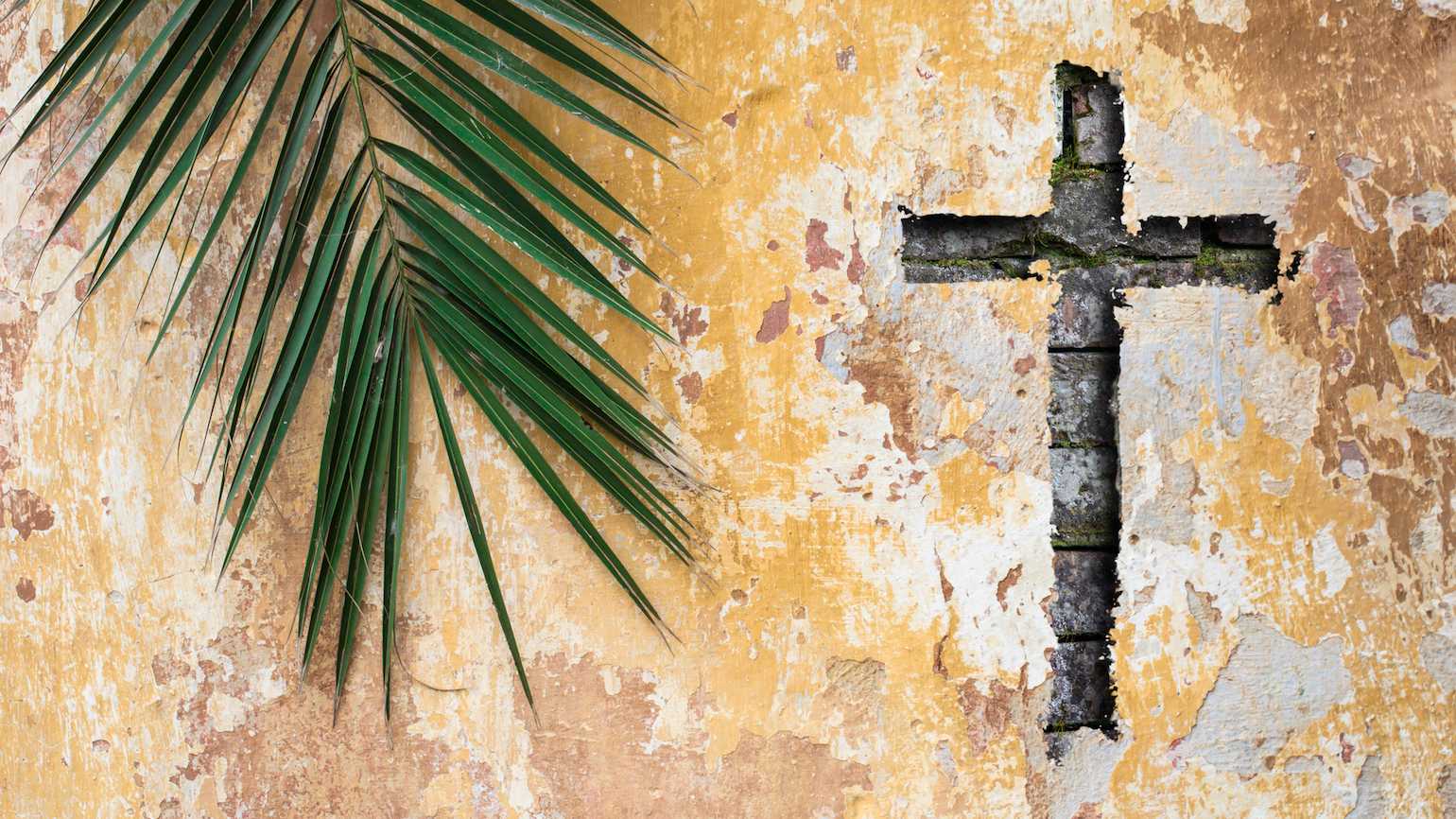
With a snap of our fingers, the Christian Lenten journey is coming to an end as Holy Week is quickly approaching. This time of solemnity that is remembered between Palm Sunday (April 10th) and Easter morning (April 17th) is meant to be a time where we journey with Christ through the final moments of his earthly ministry.
Holy Week begins with Palm Sunday and the celebration of Jesus’ triumphal entry into Jerusalem. Both disciples and onlookers alike celebrated his final return to the holy city. Waving palm branches and laying their cloak on the ground, the crowds gathered there that day and showed their respect and praise for Christ. On Palm Sunday, Christians imitate this ancient tradition as we too wave palm branches and sing “All Glory, Laud, and Honor” in celebration of the fateful journey Christ made for us into the walls of the city one final time.
The week continues with Holy Monday, Tuesday, and Wednesday. This year on these days, we keep in mind the lessons offered as Jesus curses the fig tree, cleanses the Temple, and confronts the authorities. Maundy Thursday marks the beginning of what we in the church call the Paschal Triduum or the Three Days. On this day of worship, we gather and hear the story of Jesus’ final night with his disciples before he is arrested. We are reminded of the selfless example of love and service Jesus shares with his disciples as he kneels before them washing their feet and shares one final meal together. It is custom that we, too, wash one another’s feet on this night, but with COVID, there will be other ways that we remember and celebrate this practice. The evening concludes with the stripping of the altar, lectern, and pulpit as a symbol of Christ’s impending suffering and death.
On Good Friday, we gather in silence. We come together to partake in the Tenebrae Service or Service of Darkness. On this night, we hear the account of Jesus’ final hours – his trial before Pilate, his mockery and abuse at the hands of the guards, his journey to Golgotha, and his last painful moments on the cross. We are left, like the first disciples, with immense heartache. Wanting to know what’s next, where do we go from here. We depart that night in the same way we arrived – in silence. We are left reflecting on the ultimate sacrifice Christ gave for us.
We prepare to conclude our Holy Week observances with the observance of Holy Saturday. On this final day before Easter, we wait in hopeful anticipation. The celebration of this day is practiced in many ways across the church, but at Redeemer, we will gather early Saturday morning and while carrying the cross through our town, we practice the Stations of the Cross and remember the journey Christ took for us.
Holy Week concludes with the joyous, magnificent, and marvelous celebration of Easter! We sing and say with our voices raised – Christ is Risen, He has Risen Indeed! We gather and celebrate that Christ overcame death and the grave and offered for all the promise of life eternal! Most local Christian churches have websites and/or Facebook pages where one can find announcements about plans for Easter worship. Please check announcements, bulletins, and website for more details on each.
This blog post is the expressed opinion of its writer and does not necessarily reflect the views of Tysons Interfaith or its members.
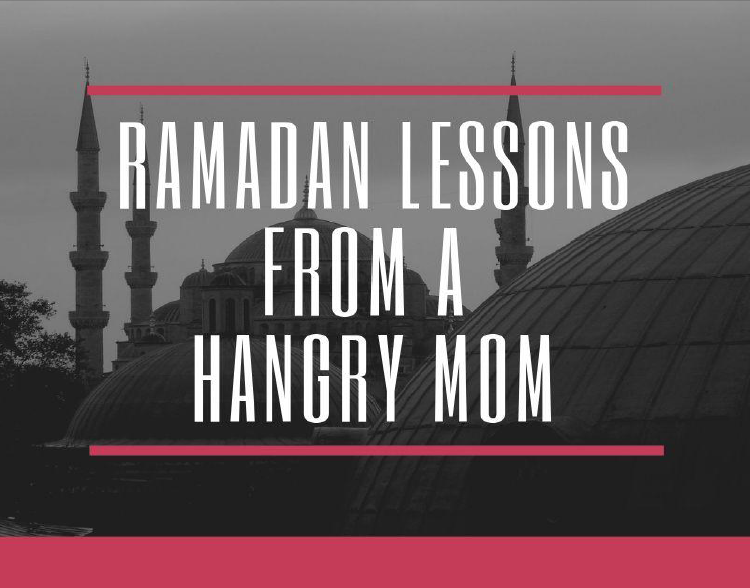
Ramadan is expected to begin at sundown on Friday, April 2. To our Muslim friends, we say, “Ramadan Murbarak.” And we bring to you, with our gratitude, this blog post written by Zaiba Hasan of the McLean Islamic Center:
It is almost the holy month of Ramadan, and I have a confession to make to you all – I am not the best fasting person. I really feel like I am Zombie Zaiba all day. Someone permanently hangry, if you will. I am not proud of this title but in an effort to be authentic I try to share the good, the bad, the ugly.
Ramadan for me has always been a mixed bag. I feel excitement along with trepidation mixed with anxiety for weeks before the holy month begins. My children start talking in hushed whispers –fasting mama is coming, with slight fear in their eyes. However, in an attempt to fix my attitude I want to focus on five lessons I have learned during this holy month, and that I hope to carry lessons with me for the remainder of the year. I pray – especially if fasting (and all that goes with it) isn’t easy for you either – that these lessons help you stay the course during the Ramadan and beyond.
Family: Nothing brings a family together faster than saying, “It’s almost Maghreb.[1]” My house sounds like a herd of elephants stampeding through the jungle before I can even get that last word out. As we sit around the table, in our dazed, hungered state, we share stories about the day, laugh at silly jokes my second grader loves to tell, and talk about some of the issues going on in the world today. I realize in our crazy schedule of work, school, practices, homework – we don’t do enough family dinners. My hope for when Ramadan ends is that we can continue to take a break from our hectic lives and make a point to connect as a family around the dinner table and in other ways.
Gratitude: Nothing gives you the most sense of gratitude then that first drink of ice cold water at sunset after you’ve been sitting outside in 90 degree weather at your son’s baseball game for three hours. After a long day of fasting I have the luxury of being able to break my fast with a delicious meal, a beautiful roof over my head, surrounded by the people I love most in this world.
The fact that two percent of the world’s population are homeless and close to 20 percent lack adequate housing isn’t lost to me and as I take that first sip of water. I am forever grateful that I am able to break that fast when others don’t know where their next meal is coming from. We all, those of us privileged to be able to break our fast with adequate food and drink and enjoy shelter, cannot be grateful enough.
Charity: The definition of fasting really means to abstain or to do without. Nothing heightens your sense of giving than to feel physically what it is like to do without. During the month of Ramadan more people are apt to donate their zakat [2] or give sadaqa [3] since this is the month of fasting, prayer and charity. However, why only give in Ramadan, or only give as generously as you do during this holy month? The act of charity should continue into the rest of the year. Whether you are donating your dollars or time, it never hurts to give to others. (Here are nine charities you can support in Ramadan and beyond through your volunteer hours, with monetary donations or both. Still looking for a good charity? Here are eight more!)
Prayer: I have another admission to make. I am not the best at prayer. I do them quickly or sometimes forget to do them at all. (I know. This is terrible). However, Ramadan brings a new sense of spirituality and connection to something bigger than myself. When you feel the pangs of hunger and thirst, it is a physical reminder of your devotion to something bigger than yourself. To take the time out of our crazy days to stop and take a break for salah, means to take a breather, have a conversation with God and readjust our attitudes to the world around us. If I can continue to do this with regularity and focus, I feel like I can only benefit from this the rest of the year.
(Here are four ways to get better about your five daily prayers and other simple spiritual goals to center in Ramadan and beyond.)
Patience: Part of my personal mission this year was to maintain my patience when my patience was at its thinnest. When your head is pounding from lack of caffeine and your children (or hubby) are grating on your nerves, it’s easy to yell out in frustration. My goal this Ramadan was to limit those outbursts as much as I could. To not let my hangry self lash out at the others around me. Like my daughter loves to tell me, “You are a grumpy fasting person.” Ouch, but it’s true. I will instead focus on gratitude, charity, prayer, and patience for the rest of the year and if God allows me to see another Ramadan, my hope is to be a better person than I am today. Until next time….
This blog post is the expressed opinion of its writer and does not necessarily reflect the views of Tysons Interfaith or its members.
[1] The evening prayer that marks the end of the fasting day
[2] za·kat /zəˈkät/ noun obligatory payment made annually under Islamic law on certain kinds of property and used for charitable and religious purpose.
[3] Sadaqah or Sadaka (Arabic: صدقة ,IPA: [sˤɑdæqɐ], “charity”, “benevolence”, plural ṣadaqāt صدقات( in the modern context has come to signify “voluntary charity”. According to the Quran, the word means voluntary offering, whose amount is at the will of the “benefactor”.
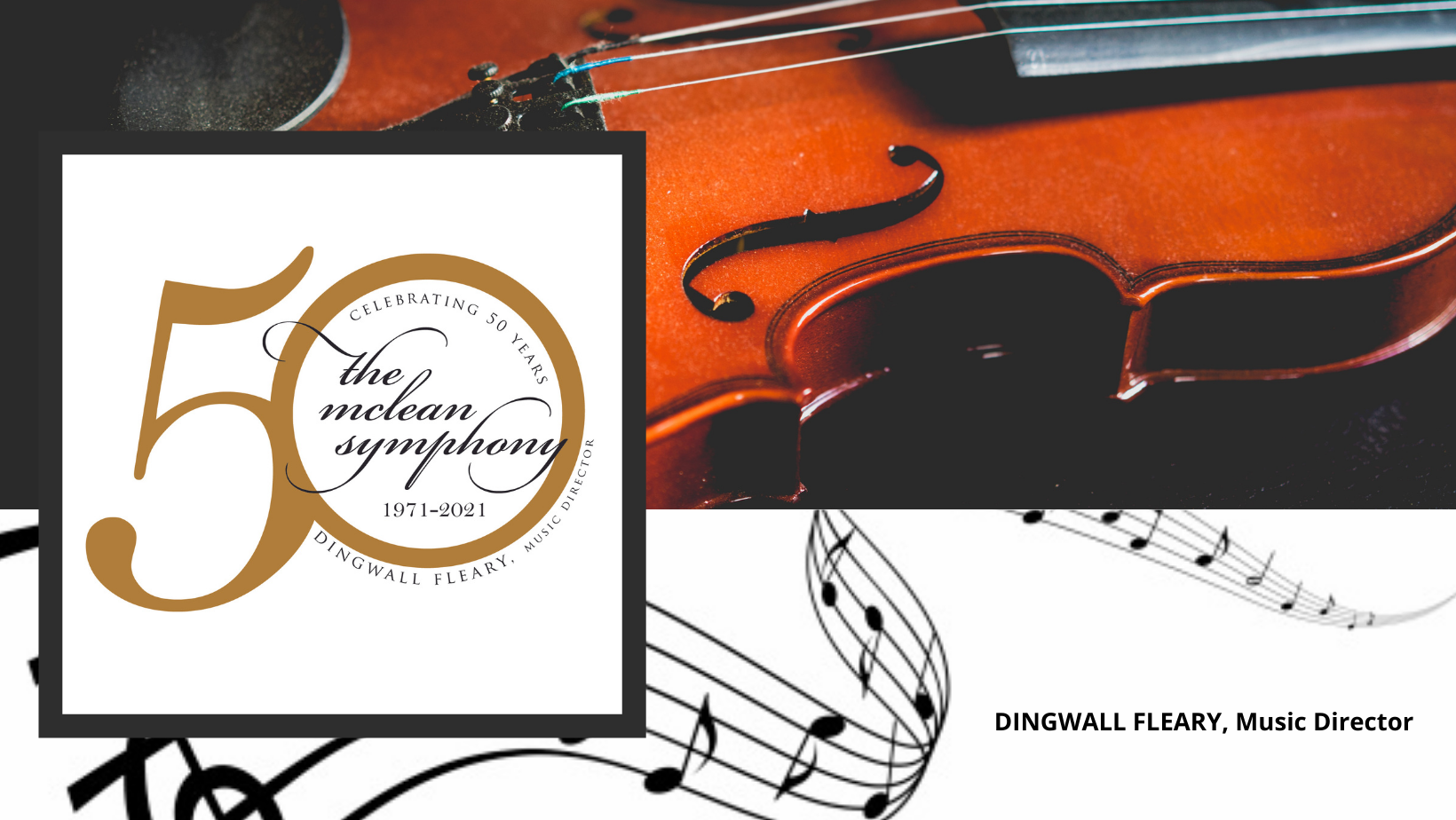
The McLean Symphony is a musical gem, right here in Tysons! It is an all-volunteer orchestra, composed of musicians living primarily in Fairfax County – our own friends and neighbors. It is the only symphony in the immediate Tysons area, and this is a very special year for them.
During the summer of 1970, directors of McLean’s Academy of Musical Arts asked young local conductor Dingwall Fleary to organize an amateur, grass-roots orchestra in the McLean Community. The primary purpose was to provide talented, non-professional instrumentalists an opportunity to perform publicly as an ensemble or orchestra. Among the earliest and most enthusiastic supporters were Washington Post editor and McLean resident Robert Ames Alden, his wife Diane, news correspondent Roger Mudd, and his wife “E.J.”
The McLean Chamber Orchestra, as it was known in 1971, has grown from the original 18 musicians to nearly 60 players. The orchestra’s expansion has led to broader and more diverse symphonic repertoire and an opportunity to feature up-and-coming, as well as established solo artists primarily based in the metropolitan Washington area. In addition to local concerts, the orchestra has been invited to play at the Wolf Trap Farm Park, the Kennedy Center, and Strathmore Hall. Over the years, under the continued leadership and guidance of its founding director, the group has developed into an impressive aggregation that proudly bears the name, The McLean Symphony!
The McLean Symphony will be performing a 50th Anniversary celebratory concert on Saturday evening, April 9th at Capital One Hall. Nicole Lacroix, host of WETA Classical, will host this special event, featuring music of American composers. The program will include the Third Symphony, in C Minor, by Florence Price; the Second Piano Concerto, in D Minor, by Edward MacDowell, featuring extraordinary virtuoso soloist, Carlos Ibay; and the premiere of Creatures of Darkness and Light, by Virginia-based composer, Nikita Wells. Anyone who enjoys live orchestral music is in for a treat if they attend this concert on April 9.
Though the McLean Symphony is a volunteer organization, they do incur expenses for music licenses, logistics, and guest performers. Those expenses are offset through ticket sales and by generous donors. Tickets for the April 9th concert may be purchased through Ticketmaster or through this link: The McLean Symphony 50th Anniversary Concert (capitalonehall.com). For the discounted pricing available to Tysons Interfaith members, friends, and those reading this blog, use code TMSFRIEND.
[When you call up or see the event on the Ticketmaster page, click “Unlock.” Enter TMSFRIEND. Click “unlock” to the right of the passcode. Verify the number of tickets you want to purchase and complete your transaction.]
This blog post is the expressed opinion of its writer and does not necessarily reflect the views of Tysons Interfaith or its members.
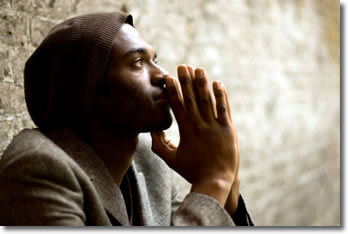
You are invited to “Pause for Peace” … to cause a “spiritual chain reaction!”
Just imagine if you invited everyone you know to invite everyone they know to “Pause for Peace” … just stop what they are doing for maybe 1 or 2 minutes (or more if they choose) and consciously choose to be peace. Their worlds will be transformed, and in the process, our whole world will experience a shift. Peace will prevail.
Our congregation at the Center for Spiritual Living Metro has chosen 12:00 noon each day plus any other time that the thought occurs, just “Pause for Peace.”
In addition, Tysons Interfaith invites you to immerse yourself for an hour in prayers and meditations for Peace from an array of traditions. This event will take place virtually on Sunday, April 3 beginning at 4:00 pm. To register, please visit: eventbrite.com
We hope you will join us as collectively we raise the consciousness of the world to Peace.

As we approach Holy Days in the Baha’i faith, we invite you to enjoy this repost of a blog from last spring:
Probably many people know that Easter and Passover occur in the spring, but spring is also a time of sacred observation for people of the Baha’i Faith.
March 20- 21 are the Baha’i Holy Days of Naw-Ruz, the Baha’i New Year.
Naw-Ruz coincides with the spring equinox and is an ancient Persian festival celebrating the “new day.” For Baha’is it marks the end of the annual nineteen-day fast and is one of the nine holy days of the year when work is suspended, and children are exempted from attending school.
Also in the spring is the Festival of Ridvan. This annual Baha’i festival commemorates the twelve days when Baha’u’llah, the founder of the Baha’i Faith, publicly proclaimed His mission as God’s messenger for this age. Elections for local, national, and international Baha’i institutions are generally held during the Festival of Ridvan. The first day (April 20 or 21), the ninth day (April 28 or 28), and the twelfth day (May 1 or 2) are celebrated as holy days when work is suspended, and children are exempted from attending school.
To learn more about the Baha’i Faith, please visit: https://www.bahai.org/
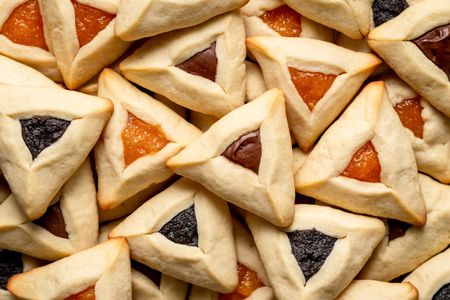
Next to Chanukah, Purim is probably the holiday to which Jewish children can most relate. There are costumes, carnivals and Hamentaschen (preserve filled cookies in the shape of a triangle). When the story is told, they get to make lots and lots of noise with groggers (twirling noise makers) in hand. But surely there is more to the holiday than that.
In the Hebrew bible, in Kethuvim (the Writings), appears the Book of Esther or Megillat Esther. In this short book, the story is related about a Persian king, who by historic timing might have been Xerxes I or Artaxerxes I. His first wife has the audacity to disobey him and she is banished. A call is put forth for a new wife and fair women from throughout the kingdom vie for this opportunity. Among them is Esther, a Jew. She wins the contest, but never reveals her background.
Concurrent with the wife plot is the plot of Haman who hates the Jews. Like generations before and after him, he couches his hatred by saying “There is a certain people, scattered and dispersed among the other peoples in all the provinces in your realm, whose laws are different from those of any other people and who do not obey the king’s laws; and it is not in Your Majesty’s interest to tolerate them”. (Esther 3:8).
Esther, from her position within, takes the risk of revealing her Jewishness to the king, and then exposes Haman’s plan to destroy her and her people. The king cancels Haman’s plans and Haman is executed.
Purim, like Chanukah, is traditionally viewed as a minor festival, but elevated to major holiday status as a result of the Jewish historical experience. Over the centuries, Haman became the embodiment of every antisemitic leader in every land where Jews were oppressed. The significance of Purim lies not so much in how it began, but in what it has become: a thankful and joyous affirmation of Jewish survival against all odds.
This blog post is the expressed opinion of its writer and does not necessarily reflect the views of Tysons Interfaith or its members.
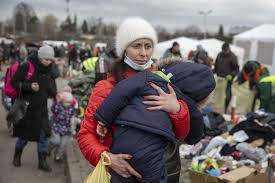
Looking for ways to help the Ukrainian people? The consensus is that cash donations made to organizations working on the ground is the best way to help.
This is by no means an exhaustive list, and Tysons Interfaith cannot endorse any particular group, but the following links may be of assistance as you consider your options:
- The US Agency for International Development (USAID) provides a list of organizations responding in Ukraine: https://www.cidi.org/disaster-responses/ukraine-crisis/
- This NPR piece highlights a few organizations providing assistance: https://www.npr.org/2022/02/25/1082992947/ukraine-support-help
- The US State Department has partnered with GoFundMe to raise funds to address the humanitarian needs of the people affected by the Russian aggression against Ukraine. All donations raised will be distributed to verified nonprofit organizations supporting vulnerable communities to obtain access to shelter, food, medical services, education, and psychosocial support, as well as other people impacted https://www.gofundme.com/f/ukraine-humanitarian-fund
- St Andrew Ukranian Orthodox Cathedral in DC is collecting medical supplies and other items through an Amazon wishlist that they are distributing to people on the ground in Ukraine. MOST IMPORTANT THINGS NEEDED: Medical Supply (bandaids, Neosporin, ibuprofen, etc). NO LIQUIDS, NO BATTERIES, NO CLOTHING, NO MILITARY COMBAT EQUIPMENT, NO DIAPERS. Order on amazon and/or deliver to: 15100 New Hampshire Ave. Silver Spring, MD 20905 Wishlist: https://www.amazon.com/hz/wishlist/ls/2ADMR0OG6MBVX?ref=cm_sw_sm_r_un_un_m4ZOH13VxHHyO
- World Central Kitchen, founded by Chef José Andrés, is responding: https://wck.org/
- Lutheran World Relief is working in Eastern Europe: https://donate.lwr.org/give/393187
- Episcopal Relief and Development has established a Ukraine Crisis Response, Fund, working with organizations on the ground in Europe: https://support.episcopalrelief.org/ukraineresponse

Finally, people of good will of different faith traditions are joining together to call for peace in the region. An example of this united voice can be found here: https://elca.org/News-and-Events/8131
